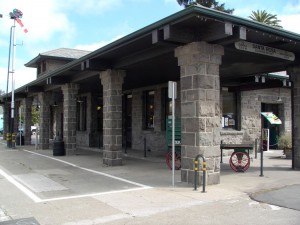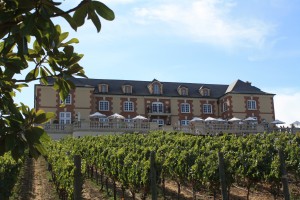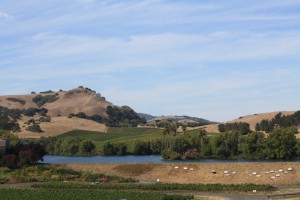Sonoma and Healdsburg, in Sonoma County, are dissimilar in many ways but they have one feature that is very similar. They each have a major town square, with inviting leafy parks that are the focal points of each town. Today they are surrounded by restaurants, tasting rooms, galleries and boutiques that announce that these are towns for people who have made it, who have the means to live the good life in Wine Country. As a visitor, you know that there is money there.
There’s another place in Sonoma County that also has a lot of history, with shops and restaurants too, but this place says something else: “I remember the old days, before Sonoma County became fashionable”. That place is Railroad Square in Santa Rosa. It’s actually a formally designated Historic District, and we like to think that that’s not so much because anything terribly historic ever happened there, but because it has retained its roots.
There’s a railroad station of course, but no railroads anymore. However, the Web (http://www.railroadsquare.net/) says that there will be light rail trains stopping there again, beginning in the fall of 2016. Trains notwithstanding, this is a section of town to be seen as a pedestrian. No matter where you’re from, you get the sense that you’ve been here before, and that you’re welcome back.
The old Santa Rosa station in Railroad Square (photo courtesy of City-Data.com)
There’s the old Hotel La Rose that’s been there since 1907. It’s the kind of railroad hotel that, in the movies, the new sheriff stayed in while the schoolmarm fixed him up a place of his own. To be honest, we’ve never stayed at the La Rose. You can’t use frequent flyer points there, alas. But it is awfully pretty to look at.
Up the street is a favorite restaurant of ours, Lococo’s. It’s a little Italian trattoria with red and white checkered napkins and with real Italians working in it. The food is good, the prices are reasonable and the charm comes free. Like we said, it’s homey.
Further up the street is Jackson’s, the latest establishment to occupy that corner spot. It’s changed hands and cuisines every few years and right now it’s a frank and honest bar. Oh, you can get food there, too, but it’s really the spot for a cold beer or a local wine, preferably on a hot summer evening. With each change of ownership, the new proprietors have been smart enough to keep the art deco cabinetry that once again provides historic continuity.
Another good part of Railroad Square is the coffee shops. Whenever we’re in Santa Rosa, which is pretty often, we get our morning joe (well, actually latte) at one of two places. The Flying Goat is newly renovated, with black and white tiles and a lot of sunshine pouring in, a very modern look. On the other side of the square, there’s A’Roma Roasters with its rustic style, little wooden tables and stools, old posters on the walls and a long row of dispensers of coffee beans, which they sell at retail. It smells of breakfast when you enter. Both have a few tables outside where you can enjoy your coffee and watch the crowd.
The choice of coffee shops is a deeply personal one, but both of these offer the same thing: they’ve been there a long time, they’ll be there a long time and you’ll feel welcome whenever you get there. Sure, there are tourists planning their wine tasting days (isn’t that what you’ll be doing too?) but there are a lot of locals as well. It’s not infrequent that people will ask where you’re from, what you’re doing in Santa Rosa and ask how you found this particular place for a cup of coffee. Just tell them you’re coming home.


